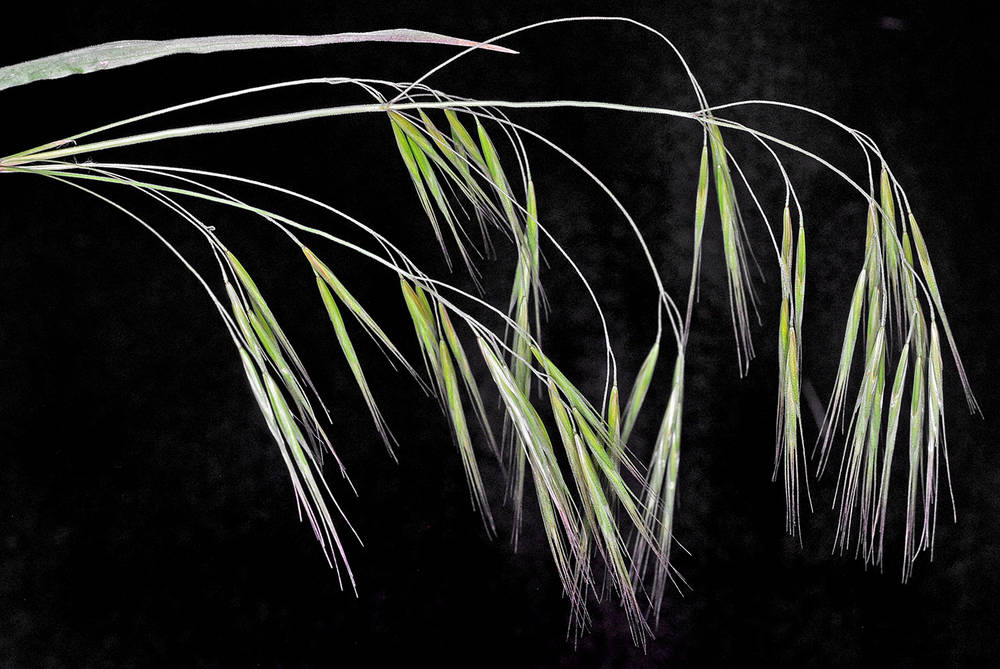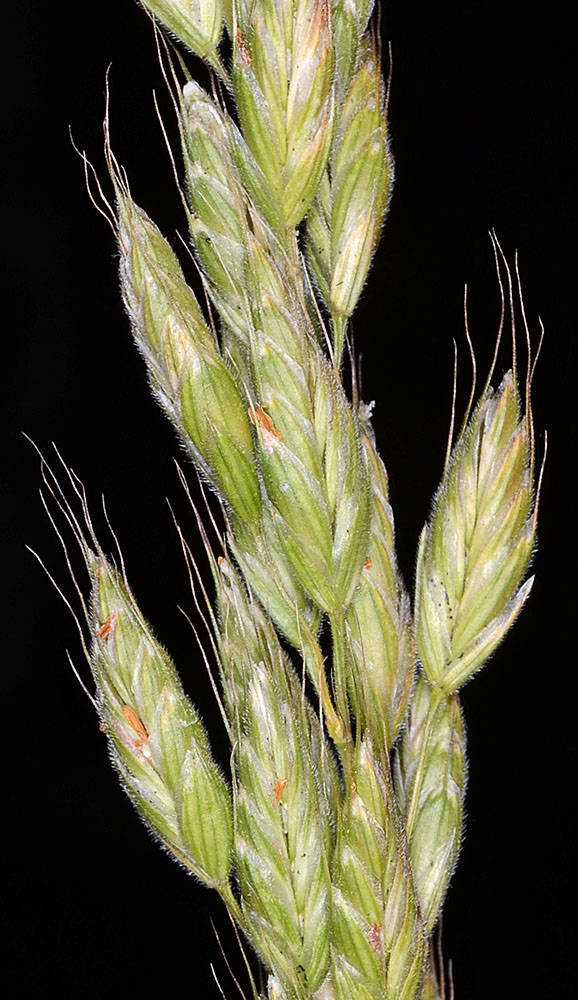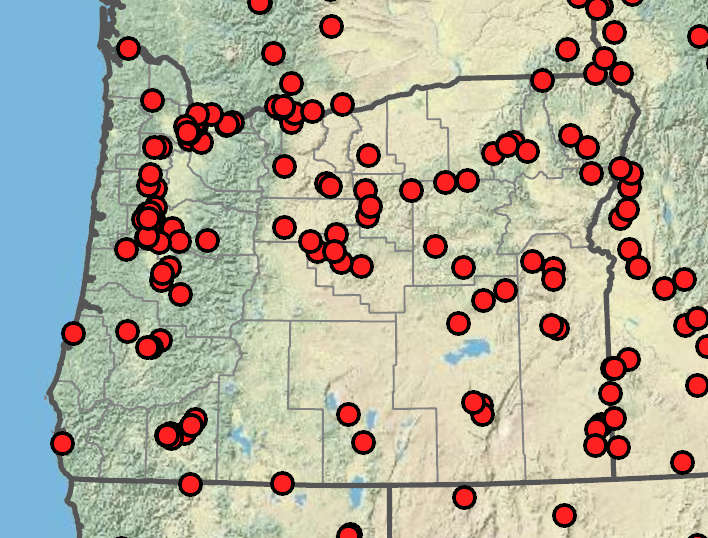Bromus tectorum
Bromus commutatus
cheatgrass, downy brome, downy chess
hairy chess, meadow brome
puberulent.
sheaths densely and softly retrorsely pubescent to pilose; upper sheaths sometimes glabrous;
blades 1–16 cm × 1–6 mm, softly hairy on both surfaces.
lower sheaths densely hairy with stiff, often retrorse hairs; upper sheaths pubescent or glabrous;
blades 9–13 cm × 2–4(9)mm, pilose on both surfaces.
5–20 × 3–8 cm; open, nodding;
branches 1–4 cm, drooping, 1-sided and longer than the spikelets, usually at least 1 branch with 4–8 spikelets.
7–16 × 3–6 cm; open; erect to ascending; some branches longer than the spikelets; slender, ascending to spreading.
10–20 mm, moderately laterally compressed, not densely crowded, 4–8 florets.
14– 18(30) mm, oblong-lanceolate; terete to moderately laterally compressed, not purple-tinged, 4–9(13) florets;
floret bases usually concealed at maturity;
rachilla internodes 1.5–2 mm, usually concealed at maturity.
villous, pubescent, or glabrous;
lower glumes 4–9 mm, 1-veined;
upper glumes 7–13 mm, 3–5-veined.
glabrous, occasionally scabrous or pubescent;
lower glumes 5–7 mm, 5-veined;
upper glumes 6–9 mm, 7(9)-veined.
equal to or shorter than paleas, weakly to strongly inrolled.
9–12 mm, lanceolate, glabrous or pubescent to pilose, 5–7-veined;
tips acuminate; hyaline; bifid, with teeth 0.8–2(3)mm, awned;
lemma awns 10–18 mm; straight.
8–11.5 × 1.7–2.6 mm, elliptic to lanceolate; leathery; backs usually glabrous, rounded over the back, distinctly 7(9)-veined;
veins not raised and thickened;
margins scabrous or pubescent, bluntly angled, inrolled or not at maturity;
tips acute to obtuse; bifid;
teeth shorter than 1 mm;
tips awned;
lemma awns 3–10 mm; straight, arising less than 1.5 mm below the lemma tips, awn of the lowest lemma shorter than the others.
0.5–1 mm.
0.7–2(3)mm.
1–2 mm shorter than lemmas.
=14.
=14, 28, 56.
Bromus tectorum
Bromus commutatus
Disturbed areas, sagebrush steppe, degraded grasslands, roadsides. 0–2400 m. BR, BW, Casc, Col, CR, ECas, Lava, Owy, Sisk, WV. CA, ID, NV, WA; throughout North America; worldwide. Exotic.
Bromus tectorum is a relatively short grass with drooping inflorescences. Similar B. sterilis and B. diandrus have longer glumes, lemmas, and awns, and spikelets that hang down at a shallower angle than those of B. tectorum. The introduction of B. tectorum to shrub steppe habitats during a time of massive overgrazing in the late 1800s has made restoration of native plant communities difficult or impossible, even where grazing no longer occurs. Fast-growing B. tectorum seedlings outcompete slower growing native grass seedlings for water in drying soils. At maturity, the awns make B. tectorum unpalatable to livestock.
Dry, disturbed areas. 0–1900m. All ecoregions except Est. CA, ID, NV, WA; north to Yukon, east to Newfoundland and GA; Europe and the Baltic region. Exotic.
Bromus commutatus is a common, weedy, annual brome. It is similar to B. racemosus, which has shorter lemmas and longer anthers. It is often confused with B. secalinus, which has paleas subequal to the lemmas and shorter lemmas.
Barbara Wilson, Richard Brainerd, Nick Otting
Barbara Wilson, Richard Brainerd, Nick Otting
- Local floras:
BC,
CA,
OR,
WA
- Local Web sites:
CalFlora,
CalPhotos,
Flora NW,
PNW Herbaria
WildflowerSearch
iNaturalist (observations)
USDA Plants Database
- LBJ Wildflower Center
- SEINet
- Plants of the World Online
- Encyclopedia of Life
- Wikipedia
- Google Image Search
- Local floras:
BC,
CA,
OR,
WA
- Local Web sites:
CalFlora,
CalPhotos,
Flora NW,
PNW Herbaria
WildflowerSearch
iNaturalist (observations)
USDA Plants Database
- LBJ Wildflower Center
- SEINet
- Plants of the World Online
- Encyclopedia of Life
- Wikipedia
- Google Image Search





